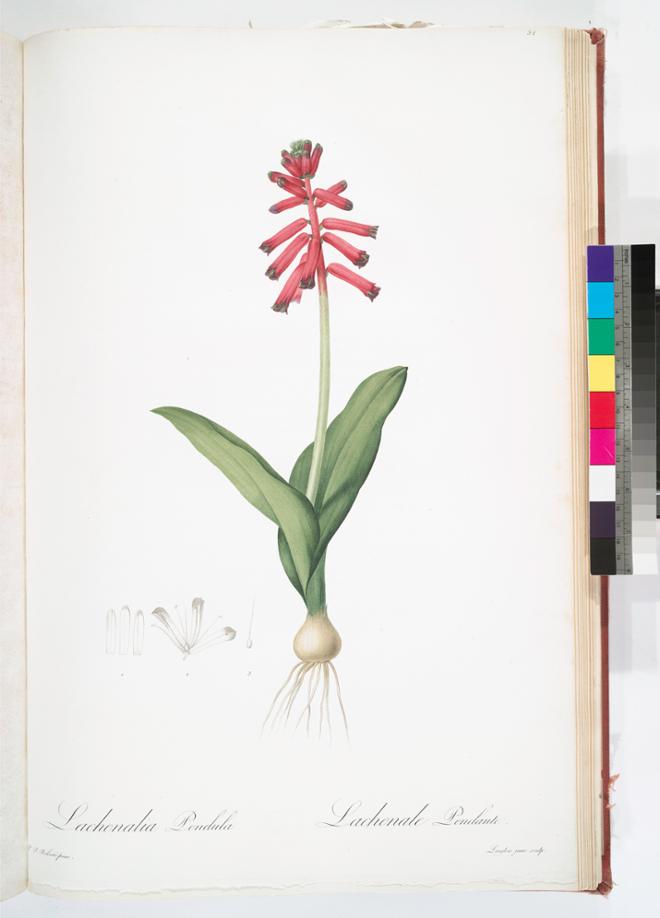Alum donates rare flower engravings from the Napoleonic era to Boatwright Library
University News
UR has rare new lilies on campus just in time for spring. Only these richly colored, delicate flowers won’t fade once the season ends.
Walter Arader, who graduated in 2009 and is now director of his family’s art gallery in New York City, donated 10 engravings from the renowned French botanical artist Pierre-Joseph Redouté’s “Les liliacées” masterworks to the Galvin Rare Book Room and Special Collections at the end of 2020.
“In art circles, Redouté is often referred to as the greatest flower artist of all time — the Raphael of botanical artwork,” Arader explained. Empress Josephine, the first wife of Napoléon Bonaparte, was among Redouté’s prominent patrons.
Redouté created the Lily series from 1805 to 1816 using a process he helped pioneer called stippling. While the traditional engraving process involves digging long lines into plates, stippling entails making a series of many small dots that achieves much more detail.
Each stipple engraving features a flower from the Lily family with scientific accuracy and colorful artistry. Only 18 copies of “Les liliacées” were ever published, according to the New York Public Library’s records. The engravings that Arader donated are in near mint condition with full clean sheets that have deep and rich original color.
“They’re of profound importance to natural history and the history of botanical artwork,” Arader said. “Redouté was incredibly prolific. It’s unbelievable how much he produced in his lifetime, but the crown jewels are the Rose series and the Lily series.”
As an experienced art collector, Arader knows. His family’s Arader Galleries in New York, which also has a location in Philadelphia, focuses on American and European natural history watercolors, natural history prints, antiquarian maps, and works on paper from about 1600 to 1900.
“Mr. Arader’s donation of these impressive botanical representations enhances our collection of artistic and environmentally related historical materials,” said Lynda Kachurek, head of Rare Books and Special Collections at Boatwright Memorial Library. “Our researchers and students will find these interesting to learn about and important for interdisciplinary research.”
Arader looks back fondly on his undergraduate days at UR, where he double majored in religious studies and philosophy. He said he loved the personal attention, small class size, campus, and friends he made. But his interest in art history didn’t develop until later, when he was in graduate school at the University of Oxford and had started working in his family’s business.
The famed art and archeology Ashmolean Museum at Oxford is a teaching collection accessible to all students at the university. “It’s very easy to make an appointment to be able to handle objects, to sit at a table, to examine pieces of living history with your own hands,” he recalled.
For Arader, the “Les liliacées” donation to UR is just the beginning. He said that he’s also planning to donate works by the American ornithologist, naturalist, and artist John James Audubon to the library. Another collection type he’d like to develop for Richmond is one with maps and manuscripts that trace the history of Virginia.
Interacting with a genuine document from the time period brings the past to life, Arader said. “It’s no longer just an idea, but something you can see and hold and feel. To me personally it’s been an incredible source of inspiration, and I hope to help Richmond build a collection that would serve to inspire students this way as well.”










